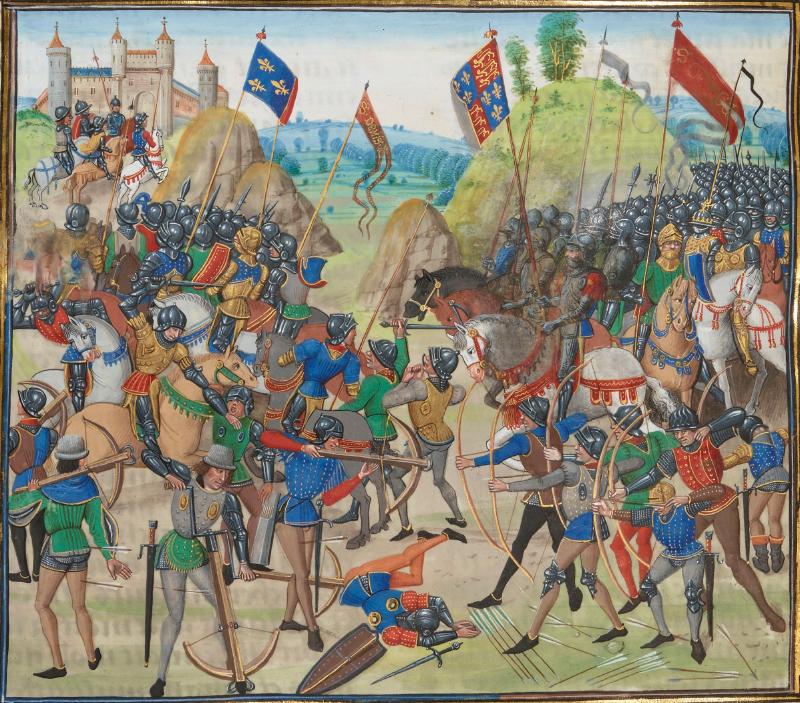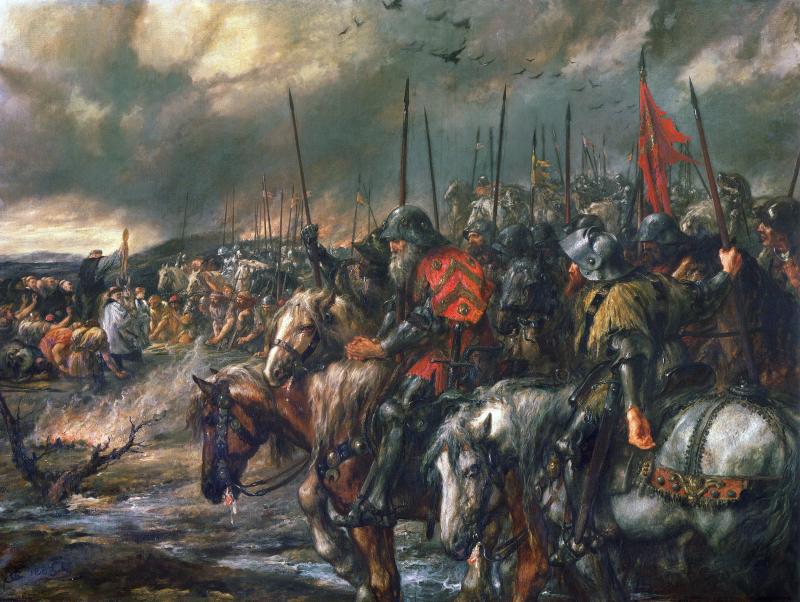The Battle of Crécy
The training, equipment, and support of a knight led to expensive and time consuming upkeep. This price was incurred willingly because of the dominance of the knight as a military chess piece. The incredible training and individual agency knights had made them uniquely equipped to deal with combat in the medieval age. However, war continued to change and this can be best visualized in combat during the Hundred Years’ War.
From 1337 - 1453 the kingdoms of France and England fought over the English holdings in Picardy and Gascony. The first phase of the Hundred Years’ War was caused by King Edward the III of England who claimed the French throne. Combat began as it traditionally had, the victor was determined by the dominance of knights. However, this changed during the battle of Crecy.
The battle of Crecy (1346) saw an English force of 14,000 face a French force of 25,000. The English force was composed of predominantly longbow archers while the French had a much larger variety of knights, men at arms, and archers. The English set up a defensive position in Crécy-en-Ponthieu near Amiens. The French made efforts at initial assaults which were never effective; after, they deployed knights and attempted to charge the English line. The English longbowmen were able to repel and disastrously defeat the French knights.
The knight is one of the key pieces of the feudal pyramid, when the knight became obsolete in combat it is hard to still justify the cost of pageantry. As wealth becomes more consolidated around a monarch it removes the necessity of delegating lands. This coincided with the rise of absolutism and more centralized monarchies.
When the original pyramid of feudalism became more polarized, power increased at the top and bottom. The obsolescence of the knight was caused by the high cost of maintenance and unsustainability as warfare evolved. This economic strain contributed to shifts in labor dynamics and the redistribution of wealth. The laborer: farmer, clothier, butcher, baker, mason, built up the bulk of the foot soldiers during medieval campaigns. As the role of the knight was diminished, the birth of standing armies took place, a profound shift occurred in the dynamics of power and opportunity. With the formation of standing armies, composed predominantly of common laborers turned soldiers, the labor class found itself further empowered. The waning importance of knights altered the social hierarchy within feudal society. With the decreasing importance of knights in warfare, the traditional power structure eroded. As warfare evolved monarchs gained greater control over military forces and consolidated power. The centralization of sovereign authority influenced labor relations; the empowerment of the peasant class grew. The decline of feudalism paved the way for the emergence of modern forms of governance. The evolution of war and the decline of the traditional feudal institution contributed to broader societal transformation, ultimately shaping the transition to modern nation-states.

